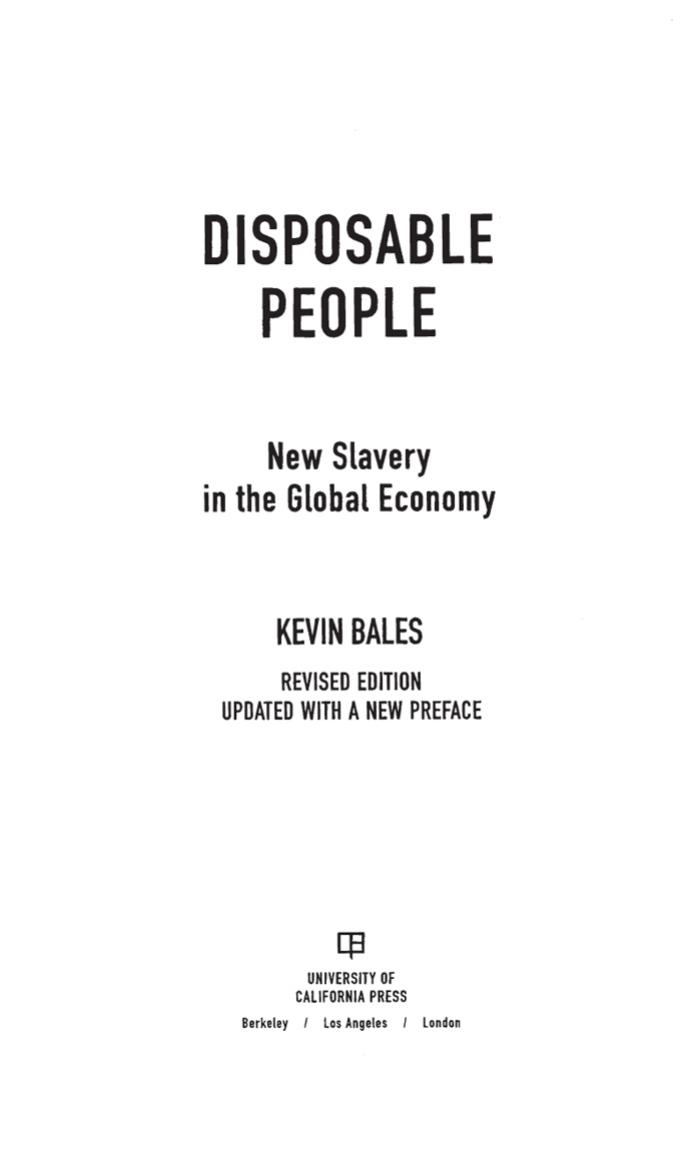Disposable People: New Slavery in the Global Economy by Kevin Bales

Author:Kevin Bales
Language: eng
Format: epub, pdf
Published: 2016-03-09T16:00:00+00:00
For the Americans to See...
The power of these companies and their links with government are clearly shown by events that dramatically altered the use of child labor in the charcoal camps in 1995-96.5 Beginning in the mid-1980s a number of researchers and human rights campaigners had exposed the horrific conditions and the use of slave labor in the charcoal camps of the Mato Grosso. At that time gatos were recruiting and enslaving whole families, and children were commonly seen loading and unloading the ovens. A number of children died of burns and other accidents. By the end of the 1980s the main human rights organization in Brazil, the Pastoral Land Commission (or CPT), had published a number of reports, picked up by the national press and television, that denounced the situation in the batterias. In spite of this publicity no government action was taken. In 1991 further pressure from human rights lawyers and the churches impelled the government to set up a commission of inquiry. Again, time passed and nothing changed; the government commission never reported. Trying to keep up the pressure, the CPT joined with other nongovernmental organizations and set up an independent commission in 1993 that fed a stream of reports and documentation to the media. Yet two more years passed before any action was taken. By now a decade had passed since unmistakable and ongoing violations of the Brazilian law against slavery had been clearly documented, but national, state, and local governments remained paralyzed.
Suddenly, in August 1995, several things happened at once. First, the governor of the state of Mato Grosso do Sul went to New York to drum up investment. While he was there the BBC showed a film about charcoal making in his state, and the New York Times ran a front-page story on the use of slave labor in Mato Grosso.6 The American investors balked at such clear evidence of slave labor, and the governor was told there would be no investment until the problem was resolved.
Back in Brazil the governor blasted the CPT and the activists for bringing shame on the state, threatening them with investigations and injunctions. But at the same time, and undoubtedly as the result of another series of unpublicized meetings among the governor, landowners, and businessmen, all the gatos in Mato Grosso do Sul abruptly came out against child labor. This universal change of heart surely came at the orders of the empreiteros and owners, but however it occurred the results were dramatic. Women and children were expelled from over 200 batterias, and hastily printed signs were nailed to trees at the entrances to charcoal camps: “No women or children are allowed to work here.” As the threat to foreign investment percolated up to the large corporations, the federal government—with admirable coordination with the empreiteros of Mato Grosso—introduced a system of education grants that paid 50 reais a month to every child of a charcoal laborer not working in the batterias.
For the families the outcome was both good and bad.
Download
Disposable People: New Slavery in the Global Economy by Kevin Bales.pdf
This site does not store any files on its server. We only index and link to content provided by other sites. Please contact the content providers to delete copyright contents if any and email us, we'll remove relevant links or contents immediately.
| General | Discrimination & Racism |
Nudge - Improving Decisions about Health, Wealth, and Happiness by Thaler Sunstein(7615)
iGen by Jean M. Twenge(5366)
The Fire Next Time by James Baldwin(5249)
Adulting by Kelly Williams Brown(4487)
The Hacking of the American Mind by Robert H. Lustig(4318)
The Sports Rules Book by Human Kinetics(4294)
The Ethical Slut by Janet W. Hardy(4173)
Captivate by Vanessa Van Edwards(3795)
Mummy Knew by Lisa James(3634)
In a Sunburned Country by Bill Bryson(3483)
The Worm at the Core by Sheldon Solomon(3435)
Ants Among Elephants by Sujatha Gidla(3417)
The 48 laws of power by Robert Greene & Joost Elffers(3024)
Suicide: A Study in Sociology by Emile Durkheim(2973)
The Slow Fix: Solve Problems, Work Smarter, and Live Better In a World Addicted to Speed by Carl Honore(2947)
Humans of New York by Brandon Stanton(2835)
The Tipping Point by Malcolm Gladwell(2827)
Handbook of Forensic Sociology and Psychology by Stephen J. Morewitz & Mark L. Goldstein(2658)
The Happy Hooker by Xaviera Hollander(2655)
